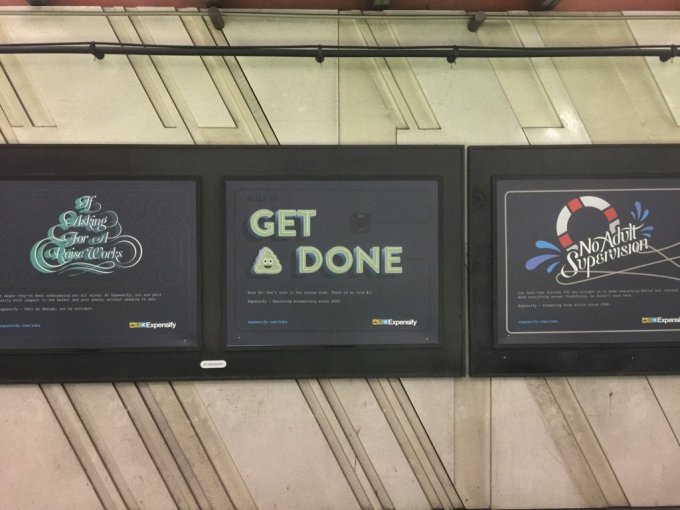The influence of a founder on their company’s culture cannot be overstated. Everything from their views on the product and business to how they think about people affects how their company’s employees will behave, and since behavior in turn informs culture, the consequences of a founder’s early decisions can be far-reaching.
So it’s not very surprising that Expensify has its own take on almost everything it does when you consider what its founder and CEO David Barrett learned early in his life: “Basically everyone is wrong about basically everything.” As we saw in part 1 of this EC-1, this led him to the revelation that it’s easier to figure things out for yourself than finding advice that applies to you. Eventually, these insights — and the adventurous P2P hacker attitude he nurtured alongside his colleagues and Travis Kalanick at Red Swoosh — would inform how he would go about shaping Expensify.
It’s striking how Expensify has managed to maintain this character 13 years later, even on the threshold of an IPO. How did this happen? During a series of interviews in February and early March, we found the answer is tied to the level of thought and effort this expense management business puts into its culture.
You see, the people at Expensify are prepared to invent their own playbook, develop it and, if needed, rewrite it completely. Its HR policies and strategy are tailored to find people who would have fun building an expense management product. It has a unique growth and recognition scheme to offset the drawbacks of a flat organizational structure. It’s even got a “Senate” that vets all major decisions. No kidding.
All this, and more, has ultimately helped Expensify reach more than 10 million users and achieve $100 million in annual revenue with just 130 employees. Let’s take a closer look at how Expensify makes it happen.
“We want the fewest people necessary to get the job done”
It’s clear Expensify’s unusually high employee-to-revenue ratio is intentional: “We want the fewest people necessary to get the job done,” Barrett says. But how do you actually achieve it? How do you hire and keep people who can deliver such results? Barrett had to learn how the hard way.
Expensify’s first team was based in San Francisco and comprised Barrett’s old Red Swoosh and Akamai colleagues, who joined a few months after Akamai fired him. A small team was enough to get started, but it was much more difficult to hire additional people. Barrett is eager to clarify the Valley is not really the best place to recruit talent: “Sure, Silicon Valley has a ton of really awesome people, but all of them have jobs!,” he says.
Retention also became an issue, as is often the case with early-stage companies. “The early days were tough because there was so much uncertainty and keeping a team together that has basically nothing — no customers, no money, no experience, no reputation. Trying to keep it together during that period was very challenging,” Barrett said.
But as business picked up with time, hiring and retention became easier. In Barrett’s own words: “Nothing settles nerves like results.” Just four years after launch, the company reached the million-user landmark with just 17 people in 2012, and another two years later, boosted its headcount to 45 to help bolster its already profitable business. This was key for Expensify to get into its groove with “a group of core people that really stuck around and all adopted the same best practices” — such as its longest tenured employee, director of product and customers, Jason Mills, who has been with Expensify since May 2011.
Doing more with less
The company’s results so far were impressive, but you can’t miss how it stuck to maintaining efficiency. Reaching profitability with about 50 employees is no mean feat, and it’s clear some of that result was related to who it hired.
Expensify is precise about who it hires, and like everything else it does, it has its own very original take on the practice. Hiring at Expensify doesn’t start with resumes, because the company simply doesn’t care about past experience. “We focus on who the people are, and not what they’ve done,” Barrett told TechCrunch.
So instead of a regular CV dictating the application process, Expensify asks candidates about their coding/admin history, whether they have a website (and if they don’t, why not?), and how Expensify would be a step toward their long-term goals. Motivation filtering aside, the process is meant to help detect three major characteristics: “Raw natural talent, ambition and humility.” This may be crossing a line between personal and professional life, but it’s intentional, because Barrett believes “no one’s going to be ambitious for Expensify if they haven’t set some goal for themselves first.”
This disregard for past experience has had two significant implications. First, it resulted in a team with very few people with prior fintech or accounting experience, which is crazy for an expense management company. What’s more, Expensify has historically favored junior talent. “The sort of person we like has such a fast career trajectory that our only option is to get them while junior,” Barrett explained in a 2010 blog post addressed to recruiters.
As you may have noticed, Expensify’s hiring process is a highly opinionated one, and it did have a few biases, especially in the early days. For instance, its stance towards senior people applying for junior roles nearly verged on ageism. That was more than a decade ago, though, and the company now has a full-fledged diversity and inclusion program.
Other points, such as wanting candidates who began programming early in their lives, could also have been harmful to diversity, as underprivileged candidates are less likely to have started coding “in elementary or middle school” or have their own site. However, director of marketing and brand Joanie Wang notes that these two points aren’t requirements, just a way to showcase interesting nuggets, and that it is actually pretty common for candidates to simply answer that they don’t have a site.
Wang is co-leading diversity and inclusion (D&I) initiatives at Expensify, and highlights that the company is doubling down on being thoughtful about its hiring pipeline from that perspective.

Expensify can set a high bar for potential employees because it has always hired sparingly, but it can only afford to do this because its team is unusually committed. “Over 60% of the company has been here for over four years, which in Silicon Valley is just insane. [ … ] We have a lot of people that have been here for eight,” Barrett said.
If you’re thinking there’s probably a rather unusual reason for this company’s high retention, you’d be right. Expensify attributes its low attrition rates to the fact that it doesn’t hire C-level or top-tier executives from outside the company. According to Barrett, if you look outside the company for leadership roles, “that’s when you put a ceiling on the growth of everyone in your company, because that indicates it’s impossible to grow here because we value skills that cannot be obtained here.”
As a result, Expensify’s team is rather different from what it would have become at other companies, especially in this sector, where accounting veterans and senior corporate managers would be the default. “You know that Fortune 500 guy brought in to make everything better but instead made everything worse? Thankfully, he doesn’t work here,” the company bragged in its 2016 “advercruiting” campaign.
Some might point to COO Anu Muralidharan as an exception to the rule, but she earned her keep just like everyone else at the company. An MBA and her experience as a vice president at Citi notwithstanding, she is also an engineer, and more importantly, took “a huge leap of faith” when she joined Expensify in late 2015. She told us she accepted to start at the bottom just like everyone else, and some five years later made her way to COO, one of the few official titles at the company.
Muralidharan’s trajectory is a good example of how Expensify managed its growth while investing in its employees. “We believe there’s a virtually unlimited capacity for those employees to create value if the right conditions are met,” Barrett says.
Choose your own path to growth
Expensify doesn’t have many official titles, just the bare minimum for a company about to IPO: CEO, COO and, since late 2020, CFO. Its organizational structure is also very close to flat, which has both advantages and limits that need to be addressed, board member and CFO Ryan Schaffer told us.
A flat structure is great for the company because it meant employee growth never hinged on winning a limited set of roles and titles. On the downside, employees who had been around for a few years started to express concerns that they weren’t “leveling up” like peers at other companies, Schaffer recalls.
This led to the creation of a growth and recognition framework, which was inspired by the insight that people can contribute in a variety of ways and want to pick their own path. It’s “almost like a ‘choose your own adventure,’” he says. In practical terms, employees can pursue four different tracks — evangelist, generalist, people management and tenure — separately and asynchronously to find and chart out their own growth plan.
So the reward for leveling up at Expensify is not a better title and neither is it directly tied to compensation. Rather, employees are incentivized to advance in their chosen tracks for their career’s benefit. It does unlock some perks, but only for recognition’s sake. For instance, if an employee is speaking at an event, which they need to do on the evangelist track, they will get a flight upgrade depending on the size of their audience — it’s nice, but probably not why someone’s doing this in the first place.
This framework lays out what it means to succeed at Expensify, which tells us a lot about what the company cares about. For instance, its people management track focuses on what Expensify refers to as its two main rules: “Get shit done,” and “Don’t ruin it for everyone else.” To advance along the track, Schaffer says, “you help people with rule number one, and then you help people with rule number two.” This track is tied to mentorship — almost every single employee has a mentor, including Schaffer himself, and the same person can have both a mentor and mentees.

Mentorship at the company was initially unstructured, but Expensify has formalized and improved the role over the years. In particular, the company wanted to make sure mentors were well prepared. “So now, to become a mentor, you have to pass a quiz, which is very hard. [ … ] It’s a pretty rigorous test on how you handle difficult situations, and what are the resources available to employees if they’re struggling, and what are some best practices in terms of prioritization and stuff like that,” Schaffer said.
The generalist track rewards employees who can contribute to more than one part of the business and help others do the same. The idea is, everyone is both welcome and informed enough to contribute to all parts of the company; and nobody should be a bottleneck. Take the idea one step further, and it means specialization is actually discouraged. In fact, multiple people told us Expensify wants “stem cells,” not “cogs in a wheel.” Expensify now makes it very clear to new applicants that their previous knowledge is welcome, but they shouldn’t plan to do just one thing.
However, making generalism such a central principle didn’t go over well with existing employees at the time, and some people did quit over it. Even now, employees are aware of the downsides, such as the informational burden of being able to know about everything at all times, which also makes it slower for new hires to get up to speed.
Despite these drawbacks, Schaffer thinks having a generalist team is more than worth it. “Part of the secret to our high revenue per employee and our high efficiency given our numbers is we try to identify any bottlenecks and eliminate those. So if there’s one thing only one person does, that’s a big issue,” he says. To avoid this, tasks and projects are broken down into “chores” anyone can take on.
The tenure track is the most straightforward on paper and it also reveals a lot about Expensify’s take on internal democracy. Anyone who completes the track becomes a member of the “top-tier group,” an internal entity Barrett describes as “the Senate of Expensify.” In theory, this means an employee who has been around for a long time, but hasn’t made progress in any other track can join the highest decision-making body in the company — the one that ultimately vetted their email endorsing Joe Biden in the 2020 U.S. elections, for instance.
From all our conversations with Expensify, it feels the framework has been a net positive for employee satisfaction and retention. The complaint on not knowing what career growth looks like has disappeared from internal surveys, Schaffer says, and if anything, the path toward growth is now clearer than at other startups. But, more importantly, considering the personalities of the folks at Expensify, they feel a sense of agency over their own path.
A pirate’s life isn’t for everyone
Expensify’s take on hiring, culture and work is unorthodox, and that came from Barrett and the founding team’s drive to chart their own path. And given the company’s public-focused communication and Barrett’s reputation as a contrarian, controversy wasn’t far off.
When Expensify wrote about “the surprisingly difficult challenge of finding the right people,” one point immediately caught flak: Barrett’s insistence on long hours. He did later clarify it as “a 50/hr week workload,” but it seems like there was little room for negotiation when you read: “There are 168 hours in a week; if you can’t work 50, you’re doing something wrong.”
Yet, most Expensify employees we talked to for this EC-1 said they’re working less than that — they know because they track how long they’ve been on the clock with a tool that also reminds them to take vacations. The principle appears to have more to do with Barrett’s own work pace, as he says he’s been working 50-hour-weeks all along.

The company’s provocative recruiting ads in the SF Muni and BART in 2016 were also the topic of more intense debates thanks to messaging like “We Fire People.” Expensify and Barrett meant it, and he doubled down in a blog post, expanding on the idea that “when it’s not working out, [Expensify does] what needs to be done.” He also made offhand-sounding comments in the post about former staff, but later clarified in a reply on Glassdoor he didn’t mean to offend anyone and it was on Expensify to give employees an environment in which they could have thrived.
And we found that Expensifiers are actually prepared to invest a lot of time in the systems the startup uses. Take for instance, its semiannual appraisal process where everyone in the company votes on everyone else’s compensation. The process is facilitated by a custom tool which Barrett compares to a neural net: It creates random pairs of employees and asks who should be paid more, over and over. “[This is] the fairest possible thing you could do, because there’s no individual employee that has any unique influence over any other individual employee,” Barrett said.
Expensify’s culture can’t be separated from its hiring and growth processes — by joining the company, employees self-select into a group that isn’t likely to get hung up about trade-offs. You can think of it as a reality distortion field if you’d like, but Expensifiers really seem to enjoy spending lots of time with their colleagues — even when they’re not on their yearly workcations. “I work with family. Expensify is family,” former director of engineering Matt McNamara wrote in 2014, and despite no longer working there, it was clear from our recent conversation his connections with his ex-colleagues are still solid.
The folks at Expensify are obviously aware that the way they work often involves more effort. It’s a price they are prepared to pay for other things they care more about.
Pirates with a heart of gold
Speaking to Expensify employees helped us understand something important: They aren’t in this because they are passionate about accounting, but because they know people hate filing expenses and waste a lot of time on it. They even changed the company’s tagline to “You weren’t born to do expenses” from “Expense reports that don’t suck” to make it even more about the user, Wang said.
With a mantra that states “Live rich, have fun, and save the world,” impact is definitely a key motivator for the company. There are different ways you could interpret the “save the world” part, but don’t laugh it off just because this is an expense management company. Beyond helping its users, Expensify is keen to proactively engage with society at large. “Being a values-based company means we act in the way that aligns with what we say our values are; it means standing for what we believe in and putting it into action,” Wang explained. “That’s why we decided to create a nonprofit arm,” she added.
The nonprofit arm, Expensify.org, gained momentum when it focused its efforts on a relief campaign for COVID-19, but it was actually launched in January 2020 and is now returning focus to its original five pillars: climate, housing, hunger, reentry and youth.
More interestingly, Expensify.org is partly funded by one of Expensify’s products via a system called “Karma Points.” Every time an Expensify Card is used to make a purchase, Expensify donates 10% of card revenue to Expensify.org. Expensify also lets its clients enable corporate offsets, which sends 2 cents to charity for every $10 approved via Expensify; individuals can choose a similar offset plan, too. According to Schaffer, this makes it rewarding both for customers and employees: “That’s something that every employee can feel good about, versus [a charitable effort] being heavily skewed toward very few people within the company.”

“Employees feel like they’re making a difference,” Schaffer says, and that simple observation indicates why Expensifiers are so committed to the expense management company — its idiosyncrasies are what Expensify’s employees stay back for as its continued to expand, which is the subject of Part 3 of this EC-1.
How Expensify shed Silicon Valley arrogance to realize its global ambitions
Expensify EC-1 Table of Contents
This EC-1 was serialized starting early May and continuing through early June.
- Introduction
- Part 1: Origin story
- Part 2: Culture
- Part 3: Expansion and remote work
- Part 4: Engineering and technology
- Part 5: Business model
Also check out other EC-1s on Extra Crunch.






























Comment